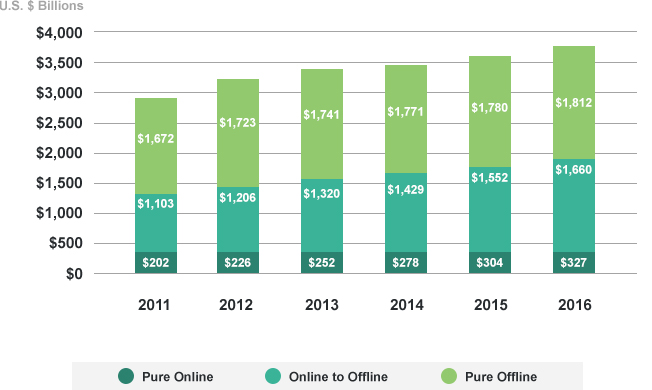Mobile-age location-based marketing

According to local advertising and marketing marketplace think-tank BIA/Kelsey smartphone and mobile internet device penetration in the US is estimated to have reached 87% of the population.
In 2016, more than 25% of all search volume in the US is mobile and more than 50% of mobile searches have a local focus.
What does this mean? In short location targeting is taking over the online advertising industry and this is illustrated by US mobile ad revenues.
In 2013 the industry was worth US$7.22 billion. Of that $2.9 billion, or 40%, was location targeted, that rose to 45% or $9.2 billion for a total industry revenue of $20.3 in 2016. BIA/Kelsey projects the mobile ad industry will be worth $30.3 by 2018 and 52%, or $15.7, of that will come from location targeting.
Despite having the world at our fingertips, internet activity in the mobile age is very much about thinking local. Let’s think about that and the valuable outcome for businesses. Google has crunched the numbers and says 73% of mobile searches trigger extra action and conversions. Of those, 36% lead to continued research, 25% are visits to a retailer’s website and sharing information accounted for 18%. The search engine giant says 28% of mobile searches result in conversions – 17% visited a store, the same percentage made a purchase and 7% resulted in a call to a business.
It happens quickly. Google says mobile searches trigger rapid follow-ups. In fact, 63% of mobile search-triggered actions occur within one hour of the initial search and 55% of purchase related conversions also take place within this hour.
Figures from Verve mobile show mobile location marketing is working. Designated market area (DMA) targeting experiences an 80% lift in click through rate (CTR) when it is targeted at a hyper-geographical level.
In closing, while online search habits are rapidly moving local, offline habits are changing at a much slower rate. However the phenomenal growth in the mobile ad industry simply means online marketers cannot ignore the seismic shift towards location-based marketing.
U.S. Retail Spending

